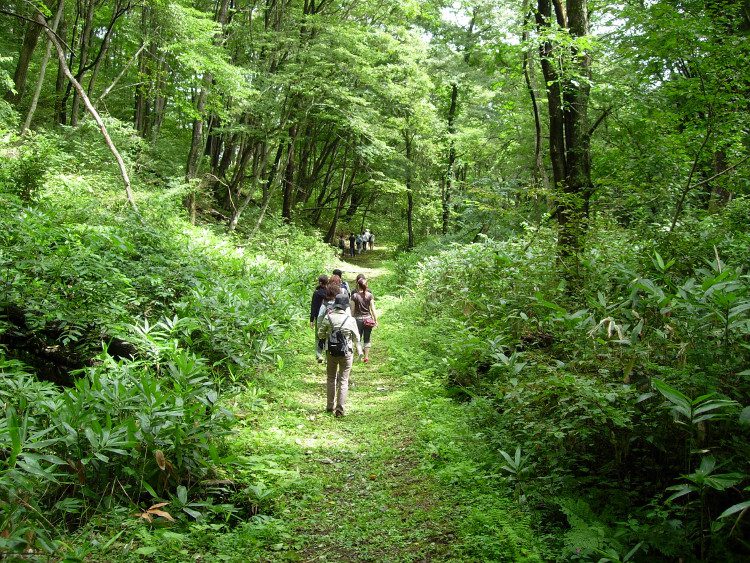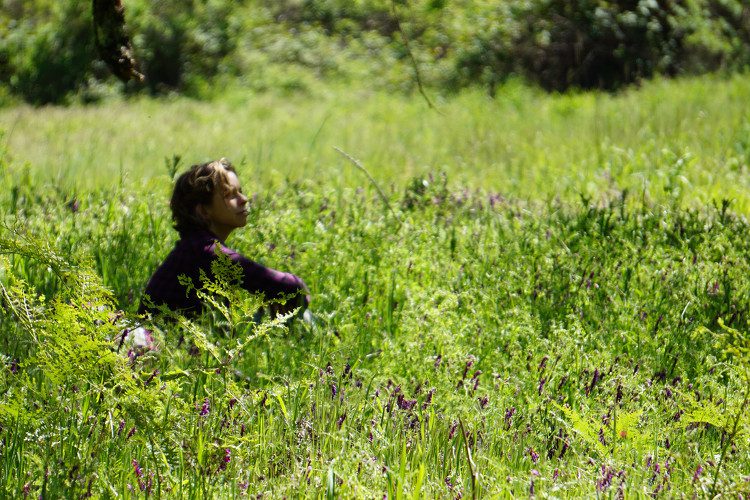Forest bathing has become an important part of preventive healthcare in Japan.
What is Japanese Forest Bathing?
The therapy of forest bathing – Shinrin-yoku refers to spending time in the forest, an activity believed to provide wonderful benefits for both physical and mental health. The term “Shinrin Yoku” in Japanese means “immersing oneself in the forest atmosphere with all senses”, also known as “forest bathing.”
This healing therapy emerged in Japan in the 1980s, as people began to notice the detrimental effects of depression, lack of concentration, and pain caused by stress in urban environments. It is difficult for individuals to truly relax in cities that constantly induce feelings of stress, overwhelm due to population pressures, traffic, and work, where space is limited and greenery is sparse.
Japanese forest bathing is a way to escape the stresses of busy urban life, and it is a therapy encouraged by medical practitioners in this country.
Of course, you don’t need to “jump into a bathtub” but rather “soak yourself” in nature, amidst the greenery, slowing down and enjoying the breathtaking beauty of the natural world.
Eastern therapeutic methods such as yoga, meditation, and Tai Chi have gained immense popularity in the West and worldwide over the past few decades. Although the practices differ, they all share the common goal of helping individuals practice mindfulness, relax, and seek inner peace.

Practicing Shinrin-yoku stimulates positive effects, including stress reduction…
In Japan, Shinrin-yoku plays an important role as a form of preventive and therapeutic care. Shinrin-yoku is gradually becoming a new form of “yoga” in Western countries. In the United States, guided Shinrin-yoku trips have become increasingly popular. Of course, you can still practice Shinrin-yoku on your own.
Some preliminary research findings suggest that practicing Shinrin-yoku stimulates positive effects, including stress reduction and improved immune function. Nature often brings a sense of awe. In one study, a group of people viewing trees exhibited a greater tendency to make positive decisions, willing to help those in need or to lessen their arrogance.
Forests – Nature is Where We Belong
Throughout our evolutionary history, we have spent 99% of our time in natural environments. Today, people living in major cities around the world spend very little time in nature. Recreational time related to nature is decreasing. Now more than ever, we need to strive to bring nature into our cities and bring ourselves closer to nature.
Stress Reduction
Forest bathing has a positive effect on many stress-related issues, helping to lower blood pressure, anxiety, and stress hormones. When we experience relaxation, we activate the parasympathetic nervous system. We “turn off” parts of the brain related to functions like organization, planning, and problem-solving, while “turning on” parts of the brain associated with happiness and empathy.

Forest bathing has a positive impact on many stress-related issues.
Connecting with Nature’s Healing Power
Living in cities, we are isolated from nature. Immersing ourselves in nature helps us connect with its healing power so that our “microbiome” (the microorganisms living in the human body) can breathe air rich in oxygen and maintain health.
You “Unlock” Yourself
If you want to embrace the wonders of nature, you need to leave your devices at home. A true “forest bathing” experience requires the use of all your senses.
A Spiritual Practice
Shinto and Buddhism are the inspirations behind the practice of Shinrin-yoku. Opening the senses to embrace nature helps you develop your intuition. You experience reverence, wonder, and transcendence. You become more receptive and profound, leading to better self-awareness and personal growth.
Nature is a Source of Inspiration
If you want to be creative, connect with the source of creativity. Nature has inspired renowned poets and artists such as Henry David Thoreau and Vincent van Gogh. In a recent study, survey participants reported a 50% increase in creativity scores after three days spent in nature.

Opening the senses to embrace nature helps you develop your intuition.
Trees Truly Have Healing Powers
Japanese researchers believe that at least some of the positive effects of “forest bathing” come from the scents of trees. Many tree species, especially conifers, emit “phytoncides” – plant-derived antimicrobial compounds, believed to have respiratory benefits and enhance immunity against diseases and cancer. Trees known for their healing scents include willows, cypress, ginkgo, hazel, and more.
Five Steps to Forest Bathing
- Observe the trees, look at the small plants growing at the base of the trees, mushrooms, and moss. Take in the entire trunk and branches. Pay attention to color, shape, and structure.
- Listen to the rustling of leaves, the chirping of birds, or the sound of flowing water. Tune in to the subtlest sounds.
- Feel the ground beneath your feet, the strength of the tree trunk, the softness of the leaves, or the sharpness of a pine cone.
- Breathe in the fresh air and the scent of the greenery. Get close and smell the flowers.
- Taste the flavor of pine needles or any leaves you identify as safe to taste.
In Japan, there are many centers dedicated to forest bathing therapy spread throughout the country, offering personalized tour packages. Visitors learn how to enjoy the surrounding nature with the assistance of guides or therapists. Individuals can also independently practice forest bathing by visiting national parks.
In Vietnam, where can you go for Japanese-style forest bathing? There are many such places across Vietnam, from North to South. As long as it’s a forest and nature, you can go. Forests in Sa Pa, Tam Dao, Cuc Phuong, Cat Ba… are familiar destinations in the North that you can choose from.


















































